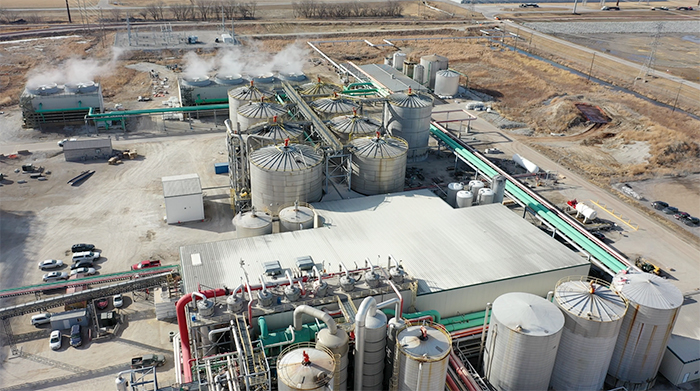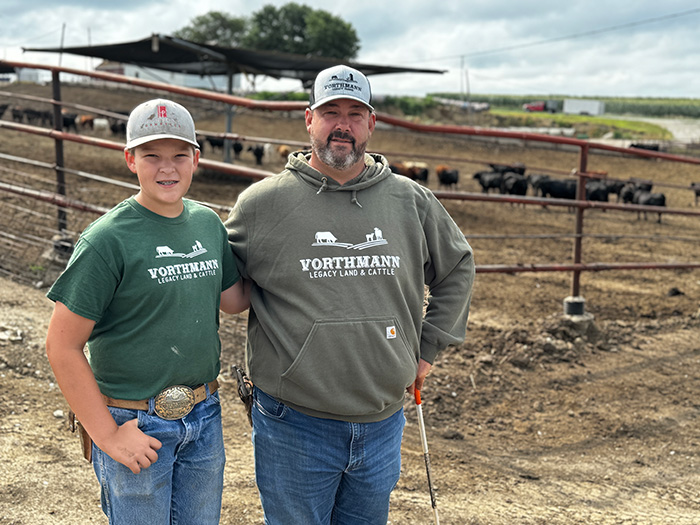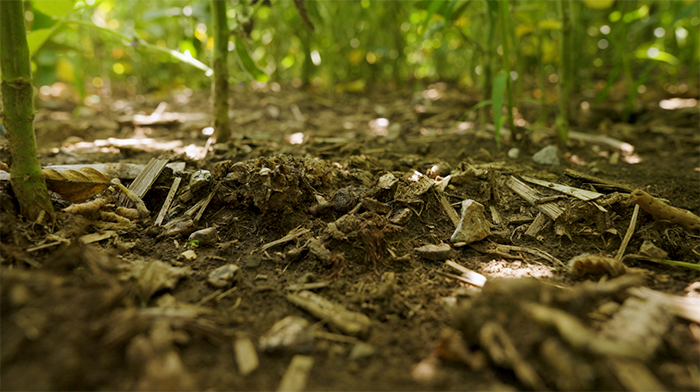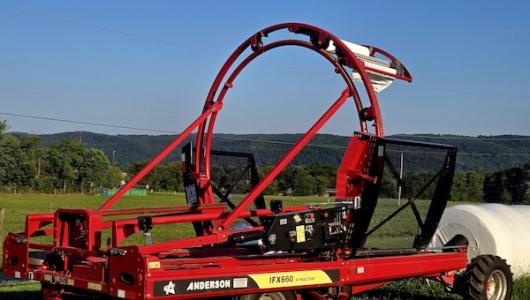Effective beginning 5/20/2025: Please note this site is under review and content may change.
The transportation sector accounts for about one-third of U.S. greenhouse gas (GHG) emissions. Aviation represents 11% of those emissions. As the U.S. works to decarbonize transportation, farmers across the country are ready to help, growing feedstocks such as corn, soybeans, and other oilseeds to be used in the production of Sustainable Aviation Fuel (SAF).
Gevo, an American renewable chemicals and advanced biofuels company, is leveraging funding through the USDA’s Partnerships for Climate-Smart Commodities for its “Farm to Flight” program, working with farmers to turn climate-smart, low-carbon intense corn into the next generation of renewable gasoline, jet fuel, and diesel fuel. This alternative to conventional jet fuel reduces greenhouse gas emissions because it is made from renewable materials rather than fossil-based fuel.

The project is one of approximately 140 projects that the USDA is investing $3 billion to build and expand markets for commodities made with climate-smart practices. The Department hopes to increase the competitive advantage of U.S. agriculture both domestically and internationally, building wealth in rural communities. These climate-smart projects support a diverse range of producers and operations as they voluntarily adopt climate-smart agricultural practices and market the resulting commodities.
“It does all start at the farm,” Gevo Verity Program Lead Chandler Mazour said. “One of the best gifts of energy transfer that we’ve ever been given as humans is the beauty of photosynthesis. As it grows, corn is a hearty consumer of carbon dioxide, drawing it out of the atmosphere and capturing energy that we can then use to make bio-based renewable fuels.”
Gevo’s project focuses on producers in Iowa, Minnesota, Nebraska, and South Dakota. In Council Bluff, Iowa, Gevo has partnered with Southwest Iowa Renewable Energy (SIRE), a dry-mill corn-based ethanol facility, to create an immediate market opportunity for area producers. SIRE works directly with producers, developing specialized contracts to incentivize the production of low carbon-intense, climate-smart corn. The company not only provides payments for producers to implement climate-smart practices in their operations but leverages its network to establish premiums for farmers participating in the program.

“SIRE has always prided itself on being a company that has embraced innovation,” SIRE CEO Mike Jerke said. “We have, throughout our history, tried new and different things in order to enhance the investment of the farmers. This company is pretty much owned by farmers, and so our goal is to help them add value to what they do and increase their opportunity to get a return on a per acre basis.”
Gevo and SIRE’s collaboration is enhancing the companies’ ability to track carbon intensity reductions throughout the entire supply chain. The project is implementing the Verity Tracking platform, a Gevo program, which uses field and process-level data as well as the Argonne National Laboratory GREET model to calculate the commodity’s carbon performance. Through this platform, Gevo and SIRE hope to apply the best science in assigning carbon intensity scores to feedstocks at the field-level, enhancing end customer confidence and helping farmers monetize carbon reduction on their acres.
Corey Vorthmann, a fifth-generation farmer in southwest Iowa, has enrolled his entire operation in the Farm-to-Flight program. He likes the program’s flexibility and the ability to customize which climate-smart practices he incorporates to best fit his operation.

“With our family farm, we had not engaged in any sale of carbon credits up to this point. Quite frankly, we hadn't found a program that we believed really met the individual needs of our farm until SIRE came along,” Vorthmann said. “They provided us with an opportunity to invest in practices that we were comfortable with as well as a menu of options that would help us not only earn a premium on the corn that we sold there, but also get to a lower carbon intensity score on our corn and create a more marketable commodity.”
Gevo’s Farm-to-Flight Program rewards farmers on a performance basis for delivering low-carbon intense corn using climate-smart practices such as no-tillage and low-tillage techniques, soil carbon amendment, and cover cropping. These practices add organic matter and nutrients to the soil, providing a foundation for both higher crop yield and higher carbon capture.

“There is an immediate financial incentive benefit in working with us under the USDA Climate-Smart Commodities grant, but there’s also a long-term impact as these practice benefits manifest out on a specific field,” Mazour said. “A healthier crop, reduction in inputs, stability of yields…all of that can be captured in the outcome – the carbon intensity of your crop.”
For Vorthmann, the program is a win-win, rewarding his family for its years of stewardship and offering personalized technical assistance to continue building on that conservation foundation.
“Sustainability has been something that we've focused on for many years,” he said. “We are all about improving our return on investment by protecting our topsoil. Through our partnership with SIRE, they’re rewarding us for the stewardship we have in place and giving us a chance to learn about practices that we may be able to implement in the future.”
By funding projects like Gevo’s Farm-to-Flight Program, Partnerships for Climate-Smart Commodities is leveraging innovative approaches to transform the aviation sector and meet a government-wide goal to achieve net-zero greenhouse gas emissions by 2050.Increasing the production of sustainable aviation fuels will support American agriculture, offering producers another opportunity to earn more money during off seasons by providing feedstocks to this new market, while also securing benefits for their farms like reduced nutrient losses and improved soil quality.
“As farmers, we need to not only provide the world with an abundant food supply, but one that's produced responsibly,” Vorthmann said. “As a partner with SIRE and Gevo, we're able to do that and incentivize our own production, which is just common sense and good business practice.”
By supporting a diverse range of producers and operation types, USDA and its partners are innovating a number of climate-smart solutions that impact numerous natural resource concerns while also strengthening rural economies by diversifying revenue streams. To learn more about Gevo’s Farm-to-Flight climate-smart project and other Partnerships for Climate-Smart Commodities projects, visit the project dashboard. Interested producers can learn more about projects in their state by commodity type and climate-smart practice implementation and can access project sign-ups via the site.
Brooke DeCubellis, Partnerships for Climate-Smart Commodities Communications Coordinator.


